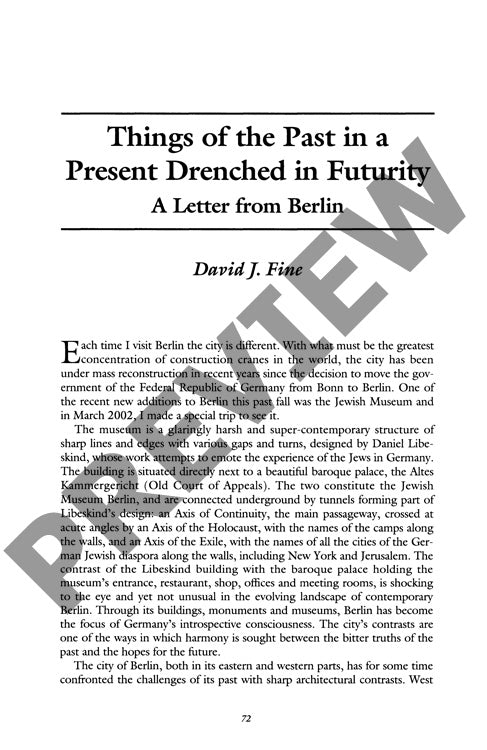Things of the Past in a Present Drenched
Couldn't load pickup availability
Berlin's architectural landscape embodies Germany's complex struggle to reconcile its Nazi past with its democratic present. Through stark contrasts between historical and modern structures, the city's post-reunification reconstruction creates deliberate tensions between imperial grandeur, historical trauma, and contemporary aspirations. Ethnographic observation and architectural analysis of three pivotal sites—the Kaiser Wilhelm Gedächtniskirche, the glass-domed Reichstag, and Daniel Libeskind's Jewish Museum Berlin—reveal how architectural juxtaposition serves as a mechanism for confronting "die gegenwärtige Vergangenheit" (the ever-present past), particularly the period from 1933-1945. While the Jewish Museum Berlin effectively preserves and celebrates German-Jewish heritage, it inadvertently exoticizes Jewish experience by separating it from mainstream German history. The German Historical Museum's Holocaust exhibition, by comparison, achieves more sophisticated integration of Jewish experience within the broader German historical narrative. These architectural contrasts—old alongside new, damaged beside restored—exemplify Germany's distinctive approach to national memory, enabling acknowledgment of historical culpability while constructing a democratic future. This strategic design allows contemporary Germany to inhabit spaces of former imperial and Nazi power while maintaining critical distance through modernist interventions.

More Information
-
Physical Description
-
Publication Information
Published 2003
ISBN
-
Publication Credits
David Fine

